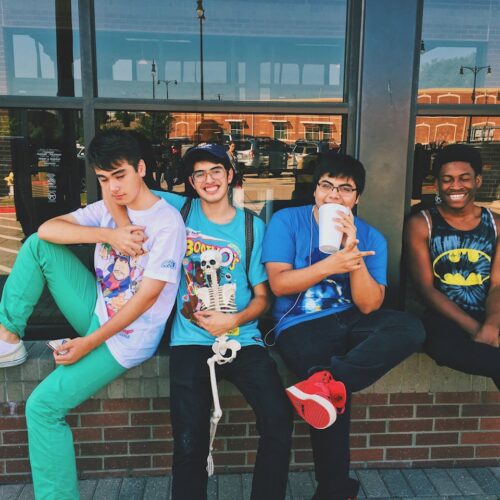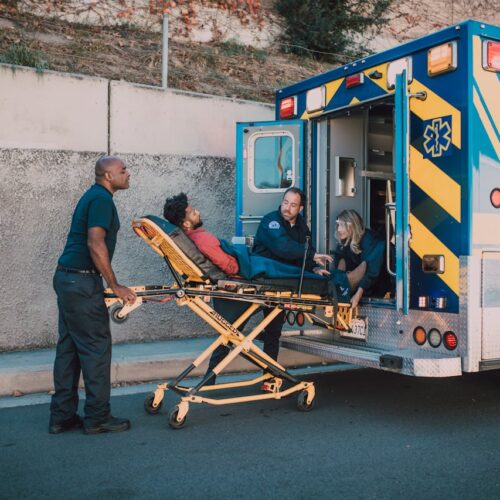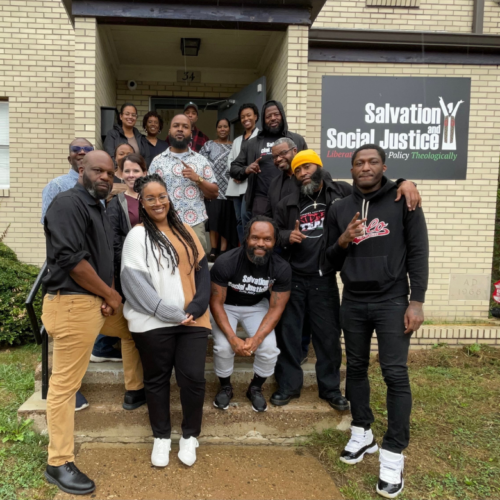Prosocial Employment Programs Create Positive Outcomes for Men in Michigan Correctional Facilities
Looking forward 30 years from now, Curtis sees a future where he’s retired and living off the 401k he’s accrued after years of working a steady job he enjoys.
Just a few years ago, though, his vision barely extended past the end of the prison sentence he was serving. He was incarcerated in the St. Louis Correctional Facility in Michigan for credit card fraud and financial crimes, and it wasn’t his first time in the system.
“Even when I thought about getting out, I thought maybe I’d never be more than a McDonald’s clerk because of my record,” Curtis said.
That began to change approximately two years before his sentence ended, when Michigan Department of Corrections’ (MI DOC) staff suggested he apply for the MI DOC Computer Service Technician program because it would all but guarantee him a job upon release if he stayed committed to the curriculum. Funded by a 2015 Second Chance Act Technology-Based Career Training Program for Incarcerated Adults and Juveniles grant, the program uses a prosocial model—a therapeutic intervention technique designed to transform people’s behavior by reinforcing and rewarding positive social behaviors—to train people who are between 12 and 24 months from their release date in skills that prepare them for technology-based careers.
Once accepted into the program, Curtis was transferred to the Gus Harrison Correctional Facility in Adrian where he had access to designated study spaces, ample school supplies, and a classroom filled with brand new computers and equipment. The program was fully immersive—he lived in the same unit as his classmates, ate with them, went to the yard with them, and of course, studied with them.
“There was total buy-in at the administrative level for the program,” Curtis said. “They kept us together because they wanted all the guys to influence each other. They really invested in the facility and in us.”
Several months into the program, Curtis was again transferred to the Computer Service Technician program at G. Robert Cotton Correctional Facility in Jackson, where he felt front line staff were more committed to the program and invested in the participants they supervised than at Harrison. While program participants were not housed together or given separate space from the general population to do their schoolwork, the support of the officers helped create an environment that was even more conducive to success, he said.
“The [officers] were more understanding and culturally sensitive—they pushed us to do better,” Curtis said. “And because of that, the guys in the program felt empowered. They’d set up their own study groups and help each other stay focused and out of trouble.”
For Curtis—who has since been released and is now the head IT instructor at a digital technology training school—the Computer Service Technician programs at Harrison and Cotton had very different, but equally important, qualities that contributed to his success.
“[It wasn’t] my first time coming home, but [it was] the first time I’d actually been given the tools to succeed and been surrounded by the kind of people who could help me do that,” Curtis said.
It Takes A Village
Much like at Cotton and Harrison, the Richard A. Handlon Correctional Facility in Ionia also bases its employment training program on the prosocial model. The Vocational Village—which offers hands-on education in carpentry, manufacturing, plumbing, electrical construction, welding, and automotive repair—gives people who are assessed as having vocational or educational needs an opportunity to participate in employment training during the day and attend programming at night to address needs related to substance use, domestic violence, and violence prevention, as well as cognitive behavioral therapy.
Staff at the Vocational Village have taken some lessons from the strengths and weaknesses of the programs at Cotton and Harrison. Similar to the buy-in achieved at Cotton, the officers who work in the Vocational Village are invested in seeing the participants succeed, program counselor Maurice Williams said. Prior to starting the program, Handlon staff received collaborative case management training, which Charles Traylor, a resident unit manager for the Vocational Village, believes enhanced their communication skills with the people incarcerated in the facility who they supervise. To keep them invested, staff are frequently given opportunities to provide input on how to improve the program.
Additionally, Warden DeWayne Burton’s commitment to advancing the goals of the Vocational Village has helped secure buy in of frontline staff, Traylor said. Warden Burton and employment counselor James Fults frequently visit employers to discuss the benefits of hiring graduates of the Vocational Village and invite them to tour the facility and meet with program participants to discuss post-release employment opportunities. Fults also works one-on-one with program participants to obtain the necessary documents for securing a job once they are released, including birth certificates, social security cards, and resumes. Additionally, as program participants become eligible for parole, they present to the same set of parole board members, each of whom have toured the Vocational Village and are supportive of the prosocial concept.
Similar to Harrison’s program participants, people in the Vocational Village are housed together and kept separate from the general population, and their days are filled with structured programming and activities that model real work experience.
“We try to make it as real life as possible—mimic the kind of day they can expect to have once they’re on the outside,” said Traylor. “We’re getting them to see that they have to wake up early, take care of themselves, be on time, and work long hours, but it’ll be worth it when they come home at the end of the day.”
Traylor also believes that housing “like-minded people [together] gets like-minded results.”
Since the program began, Vocational Village participants have had far fewer reported misconduct issues and violations than the general prison population.“The guys police themselves… and some will mentor new guys,” said Williams. “They are working toward the same goal and have a finish line.”
Once the program ends, Vocational Village participants are also showing success in their communities. As of September 2017, 51 Vocational Village program participants had been released on parole, 16 of which had secured employment prior to their release. Thirty-eight of the 51 are currently employed. Fults has stayed in contact with the employers who hired program participants and regularly checks up on their progress, said Traylor, which is just one more way staff at the Vocational Village show their commitment to participants.
“Once the prisoners see that we’re doing our part to help them be successful, they start to see the big picture,” Traylor said. “Then they want to do their part, too.”
In September 2017, MI DOC opened its second Vocational Village at Parnell Correctional Facility, which will ultimately house a number of employment training programs, including commercial trucking and computer networking.
In response to growing calls for police reform in New Jersey, particularly following the shootings of Najee Seabrooks…
Read More Three Things to Know About New Jersey’s Groundbreaking Community Response Legislation
Three Things to Know About New Jersey’s Groundbreaking Community Response Legislation
In response to growing calls for police reform in New Jersey, particularly…
Read More Apply Now: Join a Learning Community for Community and Crisis Response Teams to Improve Responses to Youth
Read More
Apply Now: Join a Learning Community for Community and Crisis Response Teams to Improve Responses to Youth
Read More
 Apply Now: Join a Learning Community Focused on Substance Use and Overdose Community Response Programs
Read More
Apply Now: Join a Learning Community Focused on Substance Use and Overdose Community Response Programs
Read More













